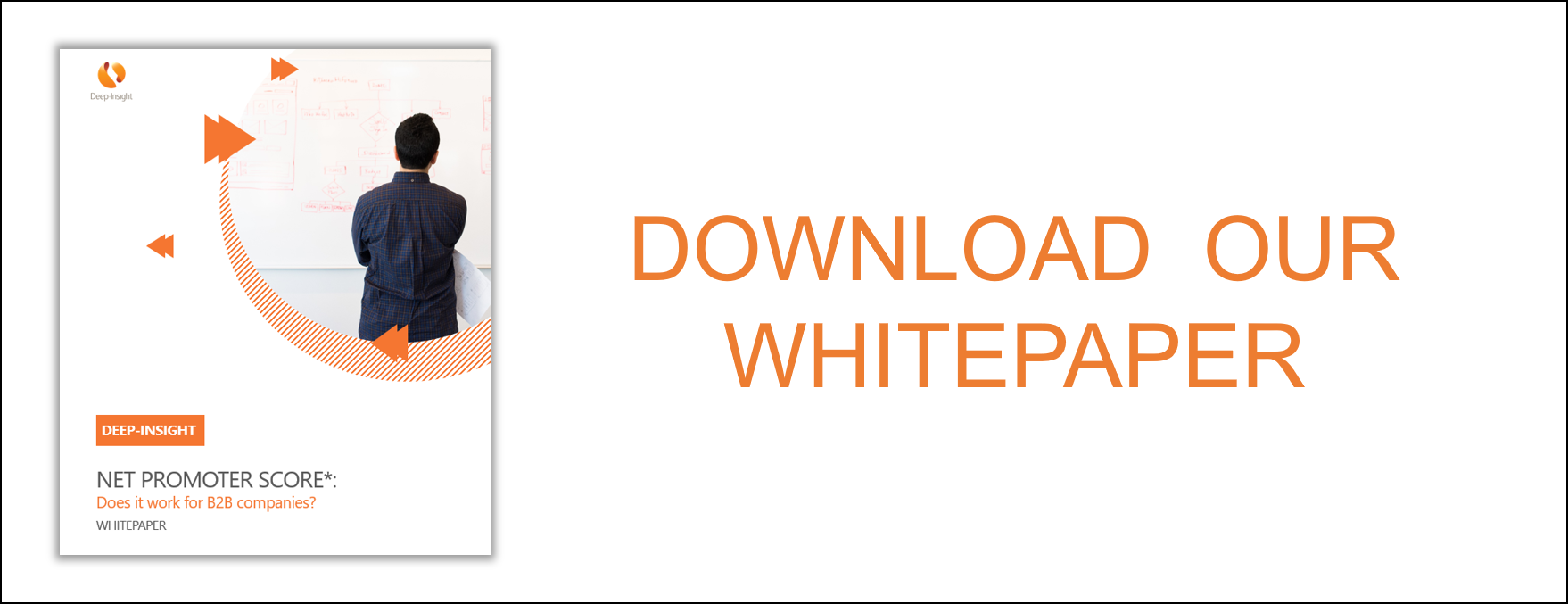We run B2B customer assessments for large corporate clients in the Netherlands and elsewhere. Very often I get asked questions like this after we deliver the customer feedback to senior management:
“OK, you’ve told us what our customers think of us, but what do we do about it now?”
“Tell us what we do in the next few weeks so that we don’t lose momentum.”
So here’s what I tell them:
1. BRIEF YOUR PEOPLE.
Typically, you need to brief at two levels and both are equally important:
– Executive Team. The senior executives in your organisation need to ‘own’ the overall results. If the customer feedback is negative or requires fundamental change, only the executive team can decide on the appropriate actions.
– Account Managers. These are the people who need to ‘own’ the results at account level. They are also the people you need to set up and run the account feedback sessions (see below).
Make sure to get the senior executives to read all the verbatim comments and see if their summary of the top issues agrees with the Deep-Insight analysis (they will understand the context better than we can). The most effective way of increasing Customer Relationship Quality (CRQ) and NPS scores is to have the programme driven by the executive team. Without the drive and passion at this level, the programme will fail.
2. DISCUSS THE RESULTS WITH YOUR CLIENTS.
Typically this happens in two stages:
– Stage 1. Within 2 weeks of the assessment results being delivered, you should get a general communication to all customers that you invited to give feedback. This should include a general ‘Thank You’ message for participating in the assessment (OK, not everybody completed it – our completion rates are typically 35-40% – but let’s not be mean!) as well as a message that their account manager will be in touch to arrange a feedback session to discuss the results (the overall results plus the specific results for their account)
– Stage 2. Within 8 weeks (or whatever target you set – but you must set a target), the account managers should have completed face-to-face meetings with all key customers. Ideally, they will have used that discussion to create a ‘Joint Action Plan’ setting out what both parties need to do, in order to address any issues unearthed in the assessment. Remember that the actions are on both sides – the account manager may need the client to change certain things as well.
3. FEED THE RESULTS INTO THE ANNUAL BONUS SCHEME.
If you haven’t done so already, think about incorporating the CRQ or NPS scores into account managers’ annual targets and bonus plans. If you have done so already, pay out the bonuses! This is probably the second most important driver of success in any customer experience programme. What gets measured and rewarded, gets done.
4. PLAN THE ACTIONS.
Again, do this at two levels:
– At corporate level. These are typically the key themes mentioned in the verbatim comments. Choose one or two big initiatives to work on during 2015. Keep it focused – any more than one or two initiatives will result in a dilution of effort.
– At client level. Each client will have its own specific set of issues including some ‘quick wins’ that can be addressed immediately.
5. MOST IMPORTANT, MONITOR PROGRESS.
If the results are poor, consider an interim assessment in 6 months (we call this a ‘Healthcheck’) but definitely repeat the feedback assessment after 12 months. If you don’t do this, you won’t know if you have achieved success.
None of the above five items are rocket science, but it strikes me as odd that some clients fail to take these actions. I know from 10 years of delivering Deep-Insight customer feedback to clients in the UK and the Netherlands, I know that these actions will result in better customer experience and improved feedback scores.

